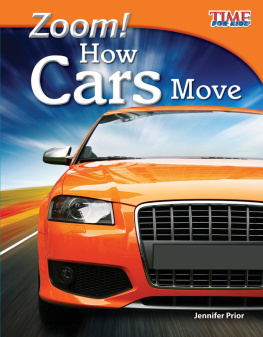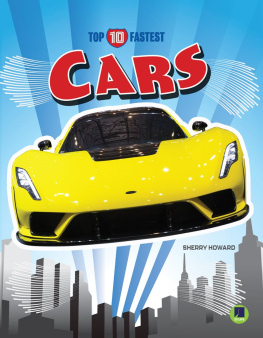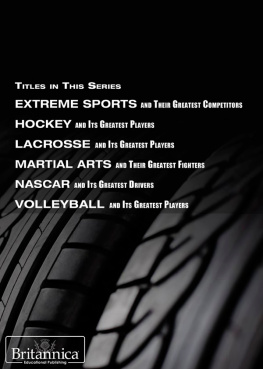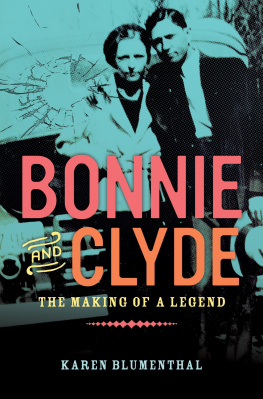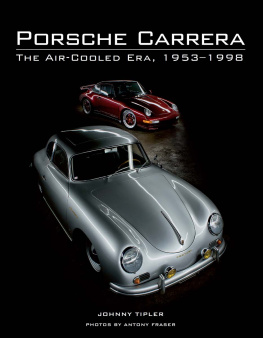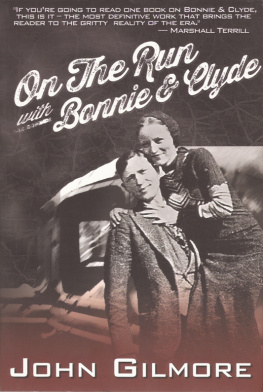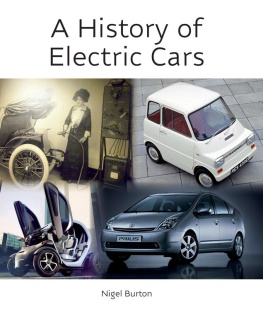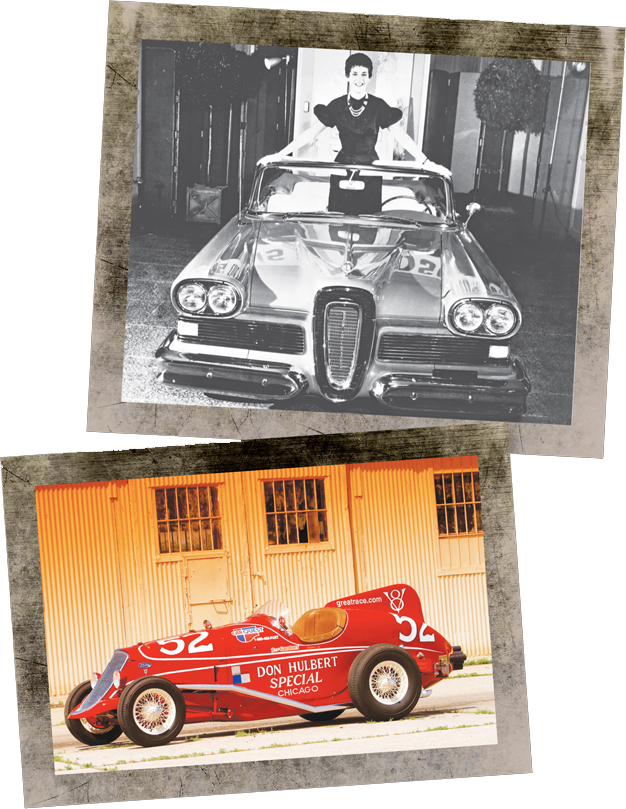
CONTENTS
INTRODUCTION
This is a book about cars, but it was inspired by a moviea Western, no lessdirector John Fords subversive masterpiece, The Man Who Shot Liberty Valance. Fords critics condemn him as an apologist who was blind to the cruel realities of how the West was won. But in Liberty Valance, Ford deconstructed and ultimately demolished the creation myth that he himself had done so much to nurture.
In an extended flashback, the movie tells the story of a nave attorney, Ransom Stoddard, played by James Stewart, who believes that the rule of law can tame the Wild West. Shortly after arriving on the frontier, hes beaten and robbed by Liberty Valance, a psychopathic outlaw brought to lurid life by Lee Marvin. Later, Stewart finds a protector in a fearless rancher, Tom Doniphon, embodied by John Wayne. The movie climaxes with the overmatched attorney miraculously killing the gunfighter in a shoot-out. Known thereafter as the man who shot Liberty Valance, Stewarts character soars to political stardom and marries the woman whom Wayne had loved.
Near the end of the movie, during the newspaper interview thats the pretext for the flashback, the elderly Stoddardnow a U.S. Senatorreveals the true story behind the shooting. The gunfight with Liberty Valance is staged again, but from a different angle. This time, movie-goers see that it was John Waynes character, not Jimmy Stewarts, who shot Liberty Valance. So Ford shows us that the senators entire careera metaphor for how the frontier was civilizedwas based not merely on a lie but on a cold-blooded murder. After hearing this, the newspaper editor burns his young reporters notes rather than debunk the cherished myth. When the legend becomes fact, he declares, print the legend.
This advice has been taken to heart by writers at least since the time of Herodotus, the ancient Greek whos known as both the Father of History and the Father of Lies. Its not hard to understand why: some stories are too good to be subjected to a rigorous reality check. In fact, the more incredible they are, the more people want to believe and share them. So they get passed from friend to friend, and magazine to magazine, and book to book, and now website to website. And before too long, the sheer volume of sources that can be cited for a particular story becomes proof that it has to be true, despite logic and all evidence to the contrary. And thats fine. After all, who doesnt enjoy a genuinely imaginative urban legend, the more outlandish the better? But the mash-up of fact and fiction cheapens the value of the stories that really are true. And thats just not right.
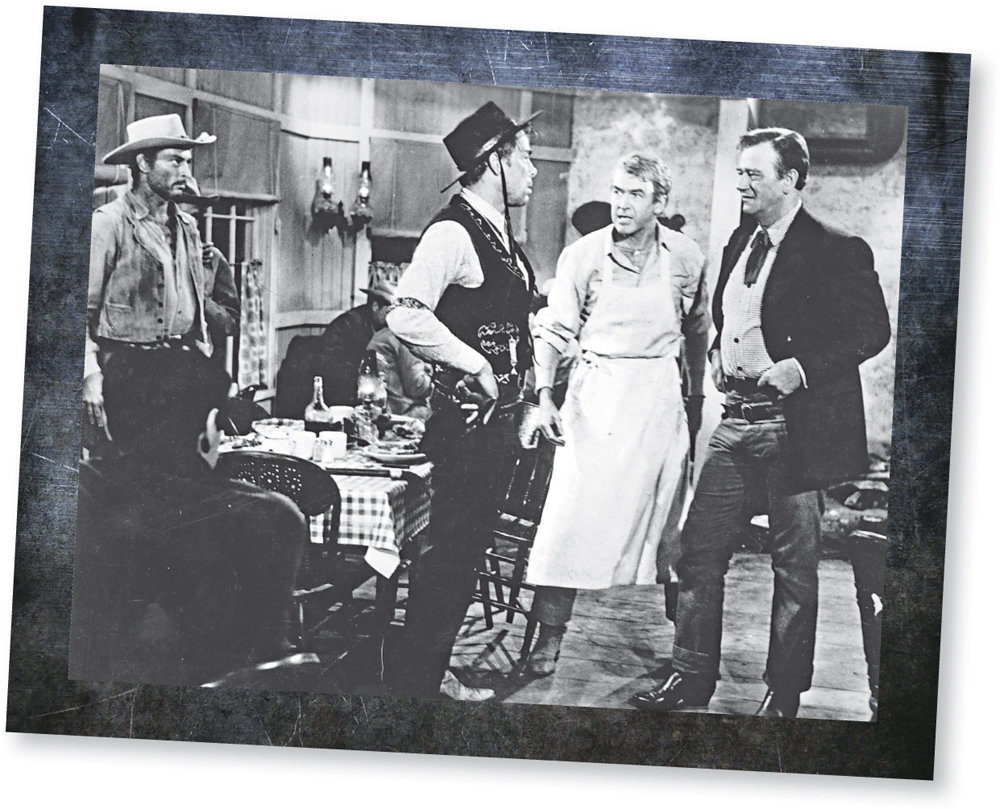
Liberty Valance, played by Lee Marvinin the black hat, naturallyconfronts Jimmy Stewart and John Wayne while henchman Lee Van Cleef looks on in a still image from The Man Who Shot Liberty Valance. Moviestore Collection Ltd/Alamy
There are already plenty of people who devote plenty of time to debunking myths, hoaxes, and urban legendsSkeptic magazine, the snopes.com website, and so on. But our peculiar interest is the world of automobiles. So we rounded up the most popular and far-fetched car-related myths and legends, and we took a fresh look at everything thats been said and written about them. We interviewed participants. We rooted around in archives. We studied period photos. We dug up old videos. When we finished our research, we made a good faith effort to determine whether the legend was true: Did some yahoo really strap JATO rockets to the roof of his 64 Impala and fly it into a cliff in the Arizona desert at 350 miles per hour? Who won the first Indy 500Ray Harroun or Ralph Mulford? Unintended accelerationmysterious vehicle flaw or simple driver error?
Some of the most unbelievable myths turned out to be absolutely true. Others proved to be nothing more than figments of overheated imaginations. But in every case, we had fun exploring the stories behind the storieshow they were born, burnished, and circulated. So like the newspaper editor in The Man Who Shot Liberty Valance, were printing the legends. But were also sharing all the facts. Decide for yourself what you want to believe.
THE ROCKET CAR VS. THE MOUNTAIN
LEGEND: A Chevrolet Impala fitted with solid-fuel rockets flew off the road, climbed 125 feet into the air, and crashed at 350 mph into a cliff in the Arizona desert.
Have you heard the one about the yahoo who strapped a set of JATO rockets to the roof of his Impala and lit the fuse? As the story goes, when Arizona Highway Patrol officers arrived on the scene, they found a smoldering Chevy telescoped into the side of a cliff, with a long, fresh set of tire streaks on the highway nearby. Seems that everything was hunky-dory as long the road went straight. But when it curved suddenly to the left, the poor sucker behind the wheel was going way too fast to turn or stop. The Impala skidded off the highway, took off like a bat out of hell, and flew into the cliff at 350 mph.
You havent heard this one before? Seriously? What rock have you been living under? Besides being one of the oldest car-related urban legends on record, its probably the most beloved, and its without question the most inventive. The legend comes in more flavors than Baskin-Robbins ice cream, from a Plymouth Road Runner fitted with an ICBM motor to a Ford Pinto packing an F-16 jet engine with full afterburners. In one form or another, this was one of the first Internet memes to emerge during the formative years of the World Wide Web. Later, the unknown driver won one of the inaugural Darwin Awards, which honor especially creative examples of intractable stupidity. Later still, the tale was the subject of the first episode of MythBusters, the TV show that applies the scientific method and a kids-dont-try-this-at-home ethic to popular legends. Even today, the Arizona Department of Public Safety continues to field inquiries about the deadly rocket car. We get calls all the time, says Officer Carrick Cook. I just heard from a retired deputy who wanted to know if it was true.
For the record, rocket cars have been around for nearly a century. Way back in 1928, German industrialist Fritz von Opel used 24 small solid-fuel rockets to power his generously winged RAK 2 to a speed of 143 mph, a remarkable feat during a period when rocketry was still getting off the groundliterally. In 1970, Gary Gabelich set a land-speed record of 630.388 mph on the Bonneville Salt Flats with his rocket-powered Blue Flame. Meanwhile, rocket-powered funny cars were a regular sight on American dragstrips until a spate of fatal wrecks blunted their popularity in the mid-1970s. Then, in 1979, Hollywood stunt man Stan Barrett went more than 736 mph and probably broke the sound barrier during a heroic but controversial run at Edwards Air Force Base in his Budweiser Rocket.
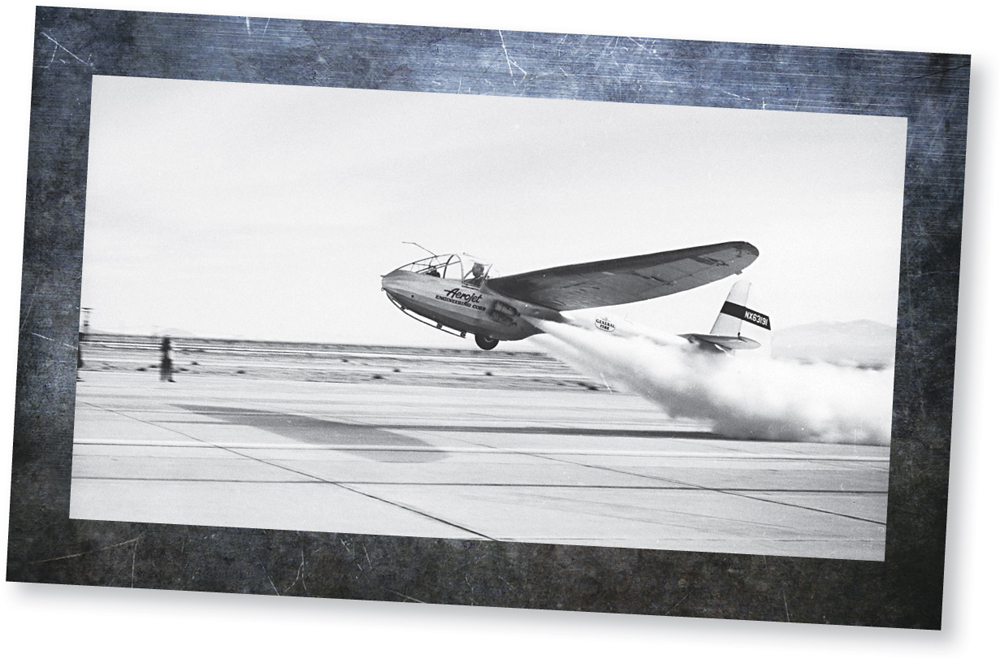
The pioneering Aerojet company was the first American firm to launch an airplane using JATO boosters, and it supplied rockets to the military during World War II. Here, an Aerojet glider takes off with JATO rocket power. Time & Life Pictures/Getty Images
Next page

